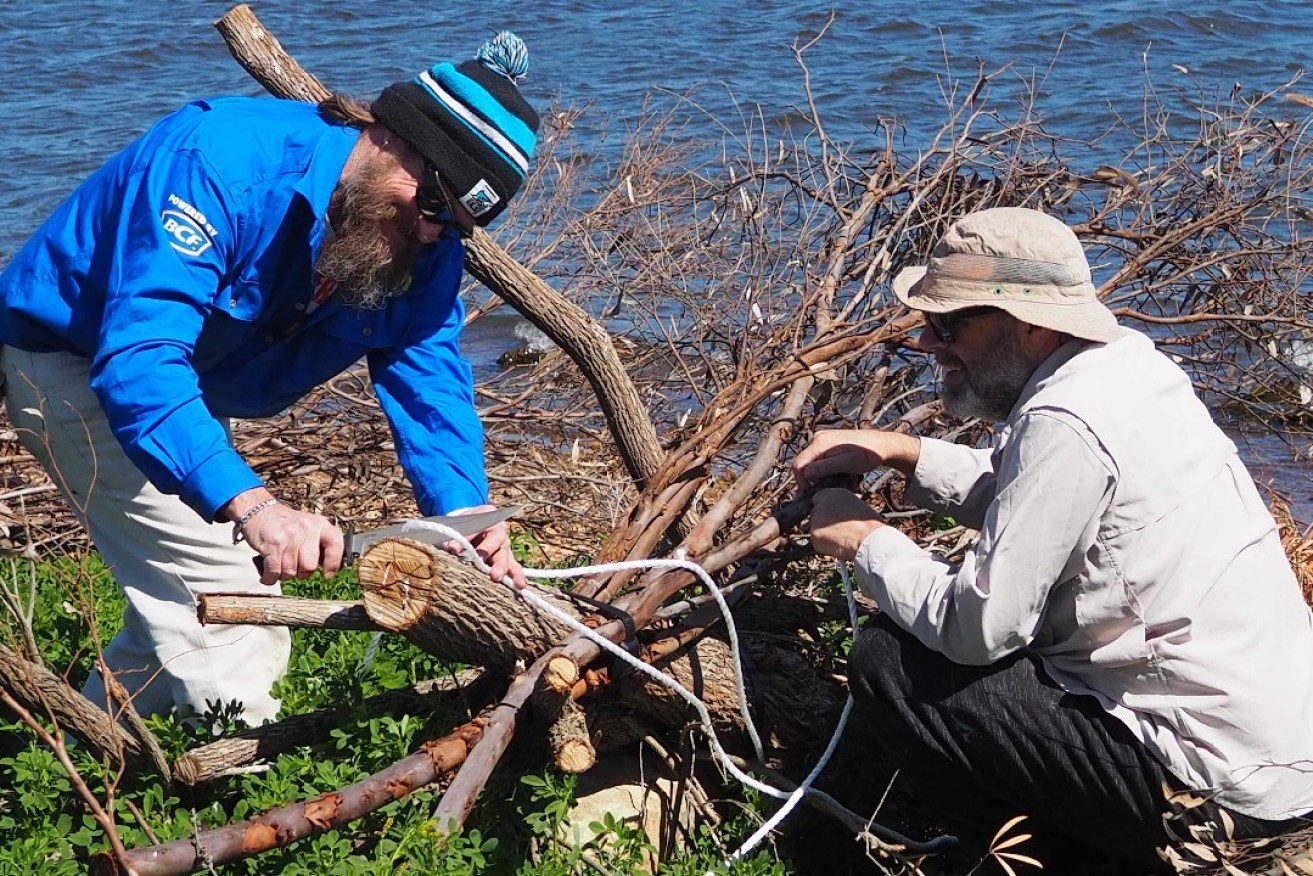Local fishos restore SA’s best fishery for trophy species
OzFish has finished the restoration of Bundaleer Reservoir’s fish habitat – the home of a giant Murray Cod caught recently after the group began stocking the waterway with fingerlings in 2016.

Luke Chamings, left, bundling together the new fish habitats. Photo: OzFish.
OzFish made and deployed the new fish habitats at Bundaleer Reservoir near Clare to help the reservoir’s fish population that was struggling with a lack of native habitat.
Luke Chamings, the Barossa-Mid North chapter president of OzFish, said the group were concerned about the lack of natural fish habitats in Bundaleer when similar projects at the Warren Reservoir revealed that the problem could cause violent fish behaviour.
The fish, Chamings said, were fighting and squabbling over what little housing existed.
“That’s when you need habitat in there so that they’re not all fighting over the one habitat,” Chamings said.
Group members built the habitats from tree limbs and then dropped them into the reservoir with anchor rocks with help from SA Water.
“We collected limestone rocks from a bloke that dismantled a bridge in Port Adelaide and used them as anchoring blocks,” Chamings said.
OzFish project manager Rachel Williams said that locals like Chamings are important to OzFish’s mission to preserve fish habitats in reservoirs across Australia.
“Chapters are set up to work in the areas where they like to fish because we rely on those guys and girls to let us know about areas where they think habitat is required,” Williams said.
“That local knowledge is really important to us.”
The restoration will directly support target species such as golden perch, silver perch and Murray cod that were already reaching large sizes.
“We constructed six complex habitat structures made from Eucalyptus limbs and branches,” Williams said.
“Many fish species rely on woody habitat, and with no old growth trees on the banks of the reservoir, there is limited natural input of timber.
“This will be great for recreational fishers. We hope that this gives native fish numbers a real boost.”
SA Water deployed the habitats using GPS and in spots where they wouldn’t disrupt fishing or recreation on in Bundaleer.
“It’s not just putting a rock on a stick and throwing it in, there’s a little bit of science,” Chamings said.
The fish can use the habitats to hide from predators, ambush prey and breed, and algae can grow on the habitats and provide food for the fish – and he said the restorations completed in October were already producing results.
“We were catching fish off of them within a week,” Chamings said. “They were pretty keen to move in.”
Habitats like these do occur naturally through debris from surrounding vegetation accumulating in the water but Bundaleer is surrounded by grass with few trees to provide any debris for fish habitats.
“It’s the best fishery in South Australia,” Chamings said.
“I don’t think you can get any better fishing up there to be brutally honest.”
The size of the fish in Bundaleer has grown exponentially, Chamings saying he recently wrestled with a cod at Bundaleer that he guessed weighed 30-40 pounds.
“They’re trophy-sized,” Chamings said.
Chamings is a lure-maker and passionate fisherman, and he thinks that fishermen must ensure fish habitats are preserved if they want to keep enjoying fishing.
“If you take the fish out of fisho you’re just left with 0,” Chamings said.




